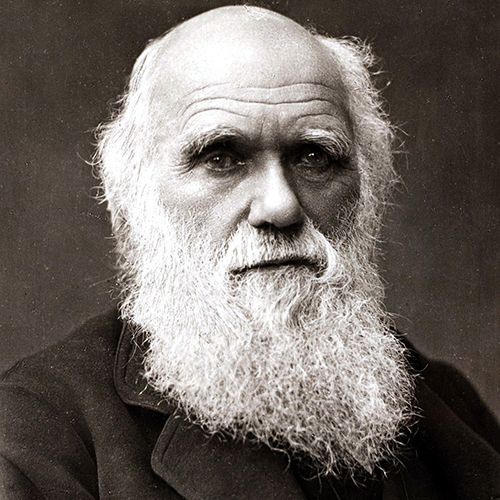Charles Darwin (Shrewsbury, Shropshire, England, February 12, 1809 — Downe, Kent, England, April 19, 1882) was a renowned English naturalist and biologist who is best known for his significant contributions to the science of evolution. His most famous work, “On the Origin of Species” (1859), drastically shifted scientific thought and proposed the idea of natural selection. Darwin’s time spent in the Galápagos Islands of Ecuador during his voyage on the HMS Beagle was instrumental in shaping his theories. Here, he meticulously observed and documented a variety of species, including the islands’ famous finches, which varied greatly in characteristics such as beak shape and size from island to island. The diversity and adaptability of these species in response to their unique environments led Darwin to conceptualize the principles of natural selection and evolution. His work, much of which was deeply rooted in the data gathered in the Galápagos, revolutionized our understanding of the natural world and has had an enduring impact on numerous fields of study, from biology to anthropology.
Charles Darwin and His Expeditions to Ecuador
The Voyage of the Beagle
Charles Darwin, the British naturalist whose theories of evolution would revolutionize the field of biology, took a single, significant journey to Ecuador as part of his five-year voyage on the HMS Beagle from 1831 to 1836. The ship reached the Galapagos Islands, part of Ecuador, in September 1835. Darwin’s time on these islands had a profound influence on his scientific thought and formed the backbone of his revolutionary theory of evolution by natural selection.
Galapagos Observations and Theories
While in the Galapagos, Darwin observed a remarkable variety of animals, many of which were endemic to individual islands within the archipelago. The differences between the same types of birds, tortoises, and iguanas on different islands struck Darwin, and he began to contemplate the forces that drove such variation. He meticulously noted these variations and collected a multitude of specimens for further analysis.
Literary Influence of the Galapagos Expedition
This expedition greatly influenced two of Darwin’s major works. His observations during the journey led to the publication of “The Voyage of the Beagle” in 1839. This book details his travels, observations, and thoughts during his voyage around the world, including his time in the Galapagos.
However, it is his magnum opus, “On the Origin of Species”, published twenty years later in 1859, where the influence of the Galapagos is most profoundly felt. The adaptive variations between species on different islands provided key evidence for his theory of evolution through natural selection. The famous finches of the Galapagos, each with different beak shapes adapted to the available food sources on their respective islands, became a quintessential example of this theory.
Subsequent Research in the Galapagos
Darwin’s work in the Galapagos Islands has had a lasting impact, making the archipelago a mecca for evolutionary biologists. Numerous studies have since been conducted there, building on Darwin’s original observations and theories. These subsequent research endeavors have led to a deeper understanding of evolution, speciation, and adaptation.
For instance, in the late 20th century, Peter and Rosemary Grant conducted a long-term study of the Galapagos finches. Their work, which mirrors Darwin’s initial observations, has provided real-time evidence for the process of natural selection, underlining the value of the Galapagos as an ongoing natural laboratory for evolutionary research.
Conclusion
Charles Darwin’s voyage to Ecuador, specifically the Galapagos Islands, was a significant event in the development of his theory of evolution. The uniqueness of the Galapagos environment offered Darwin a lens through which he could view the process of evolution in action. His observations have not only influenced seminal works of scientific literature but also paved the way for subsequent research in the Galapagos, contributing to our evolving understanding of the biological world. The name Darwin will forever be associated with these islands, a testament to the enduring influence of his pioneering work.
Works
- On the Origin of Species (1859)
- The Descent of Man, and Selection in Relation to Sex (1871)
- The Expression of the Emotions in Man and Animals (1872)
- The Voyage of the Beagle (1839) – also known as Journal and Remarks
- The Variation of Animals and Plants under Domestication (1868)
- The Structure and Distribution of Coral Reefs (1842)
- Geological Observations on the Volcanic Islands (1844)
- Geological Observations on South America (1846)
- Monograph of the Cirripedia (two volumes, 1851 and 1854)
- Fertilisation of Orchids (1862)
- The Effects of Cross and Self Fertilisation in the Vegetable Kingdom (1876)
- The Power of Movement in Plants (1880)
- Insectivorous Plants (1875)
- The Different Forms of Flowers on Plants of the Same Species (1877)
- The Formation of Vegetable Mould, Through the Action of Worms (1881)

